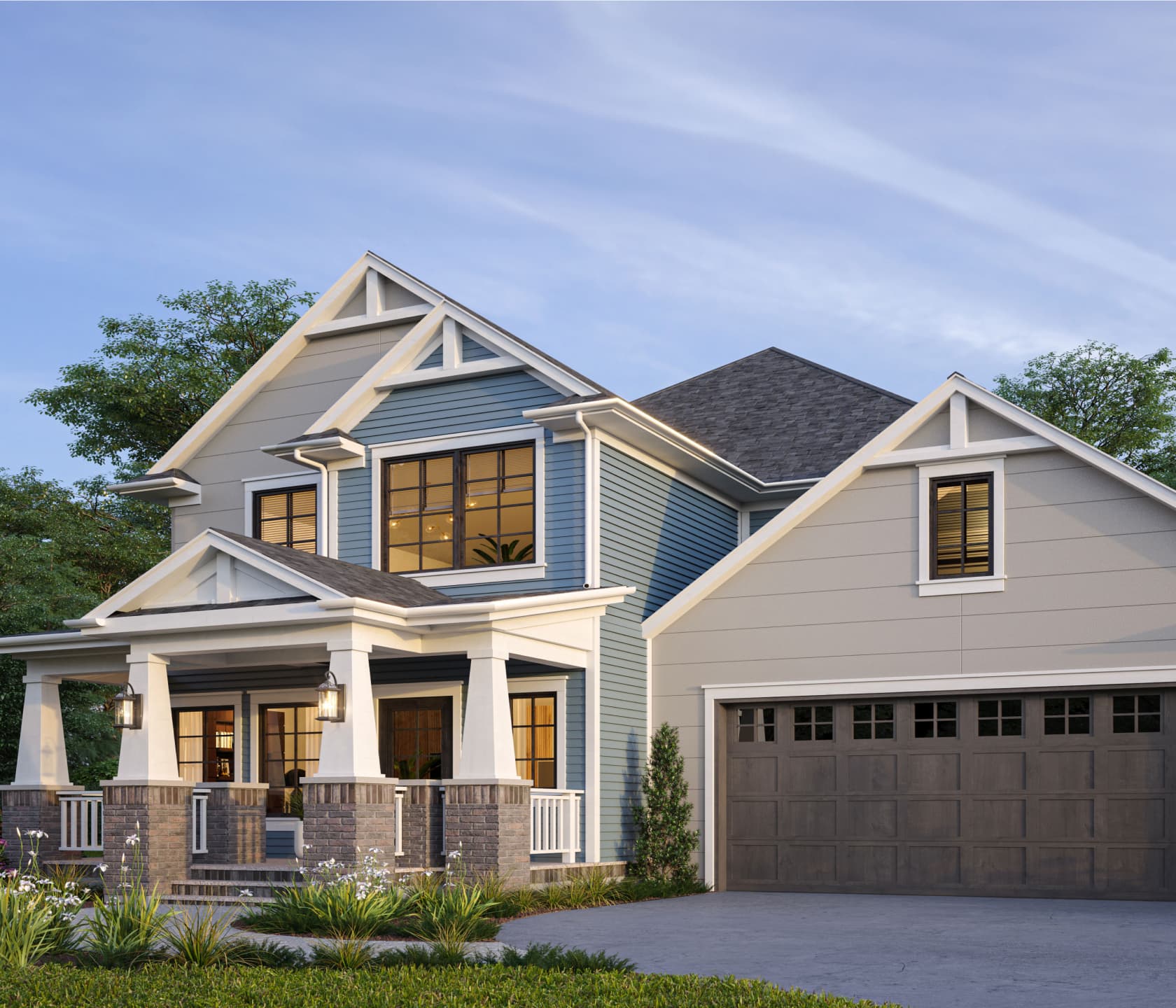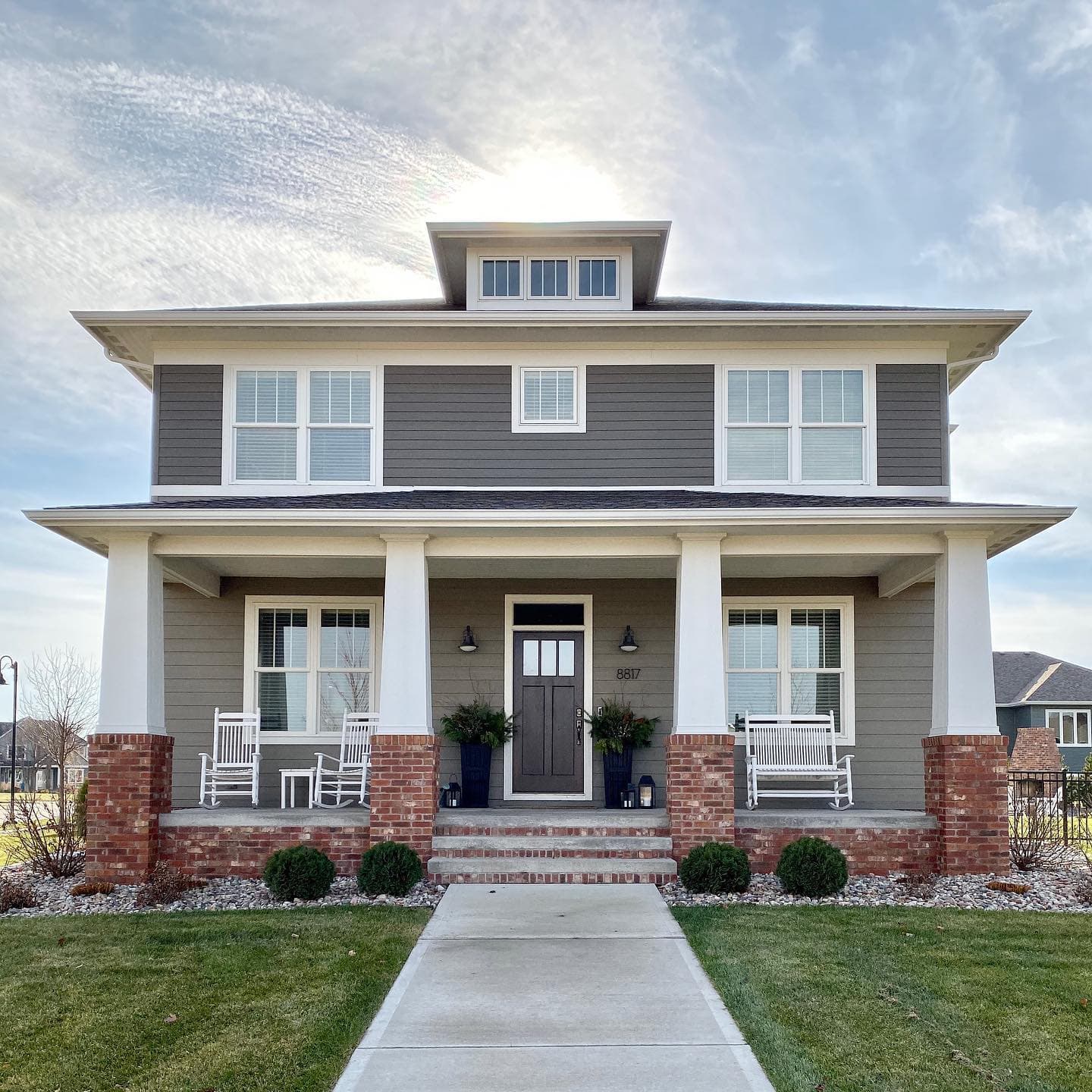The Role of Arts & & Crafts Architects in Elevating Architectural Solutions in Residential Layout
Arts and Crafts architects substantially influence property style via their commitment to workmanship and sustainability. They focus on handcrafted information and all-natural materials, which enhance both aesthetics and neighborhood identification. By including clients in the style process, these architects produce one-of-a-kind living spaces that resonate with personal tastes. This strategy raises questions regarding the future trajectory of residential architecture and its prospective influence on community dynamics. craftsman style house. What lies ahead for this classic style philosophy?

The Concepts of Arts and Crafts Architecture
The essence of Arts and Crafts architecture depends on its dedication to craftsmanship and simplicity. This architectural movement emerged in the late 19th century as a feedback to industrialization, emphasizing the worth of handmade information and natural products. The concepts of Arts and Crafts architecture prioritize functionality and consistency with the environment. Structures normally include low-pitched roofings, vast eaves, and revealed rafters, promoting a feeling of unity with nature.
Artisans played a substantial role in this style, frequently integrating attractive components like discolored glass, tiles, and woodwork, which reflect regional craftsmanship. The shade scheme tends to be earthy and suppressed, permitting structures to blend perfectly into their environments. In addition, the design motivates open layout and public spaces, fostering a sense of togetherness. In general, the concepts of Arts and Crafts architecture commemorate the elegance of simpleness and the significance of human link to both nature and neighborhood.

Lasting Practices in Residential Design
While the demand for eco responsible living remains to grow, sustainable practices in domestic design have obtained significant traction amongst architects and property owners alike. Architects are significantly integrating energy-efficient technologies and lasting materials right into their layouts, aiming to decrease carbon impacts and improve energy preservation. Techniques such as easy solar design, green roofing systems, and rain harvesting systems are ending up being typical elements of contemporary residential architecture.
Furthermore, the option of locally sourced products decreases transport discharges and sustains local economies. Focus on all-natural light and air flow not only boosts interior air quality yet also reduces reliance on synthetic lights and environment control systems. These sustainable practices show a dedication to protecting the atmosphere while supplying house owners with comfortable, efficient space. As understanding of environmental concerns expands, the assimilation of sustainability in domestic layout is poised to come to be a specifying characteristic of contemporary architecture, assisted by the concepts developed by Arts and Crafts architects.
Modification and Customization in Home Layout
Modification and customization in home design have become key trends in reaction to the expanding desire for special living settings that show specific preferences and way of livings. House owners progressively seek to tailor areas that reverberate with their individual identities, causing a more meaningful connection with their living spaces. craftsman style house. This movement encourages architects to involve customers in the style process, promoting cooperation that ensures the last end result personifies the home owner's vision
Components such as bespoke layouts, customized products, and tailored finishes permit a diverse variety of expressions in domestic design. Arts and Crafts architects play a pivotal function in this development, emphasizing workmanship and quality. Their concentrate on integrating imaginative components with performance guarantees that each home is not just cosmetically pleasing however likewise distinctly suited to the citizens' demands. Consequently, this emphasis on modification enhances the total property experience, producing rooms that are both personal and long-lasting.
:max_bytes(150000):strip_icc()/3FraserLivingRoomFireplace-afa2735100754029985d3994bfd422f8.jpg)
The Impact of Arts and Crafts Architects on Area Appearances
As neighborhoods progress, the impact of Arts and Crafts architects substantially shapes their aesthetic landscape. By highlighting handcrafted information, natural products, and traditional building and construction strategies, these architects produce homes that reverberate with their surroundings. Their designs often incorporate neighborhood flora, textures, and colors, promoting a feeling of consistency between built settings and nature.
The Arts and Crafts movement advertises neighborhood identity via architectural continuity. By urging homeowners to embrace comparable style concepts, areas establish a cohesive personality that improves aesthetic allure. This building uniformity not only improves the aesthetic experience however additionally infuses a feeling of pride amongst residents.
Moreover, the focus on sustainability and craftsmanship in Arts and Crafts architecture lines up with contemporary worths, making these styles pertinent in contemporary setups. Eventually, Arts and Crafts architects contribute significantly to the general appeal and social stability of communities, leaving a long-term impact on their aesthetic legacy.

Future Trends in Arts and Crafts Architecture
With a raising emphasis on sustainability and customization, future patterns in Arts and Crafts architecture you can try this out are positioned to mix standard craftsmanship with contemporary advancement - craftsman style house. Architects are likely to prioritize environmentally friendly products, using reclaimed timber and natural stone to enhance the sustainability of household designs. The assimilation of smart home technology will certainly come to be commonplace, allowing for personalized living experiences without jeopardizing visual honesty
The revival of artisanal techniques will certainly foster a renewed recognition for handcrafted aspects, such as bespoke cabinets and personalized tile work. Future styles might likewise show a focus on community-oriented rooms, encouraging interaction and connection among homeowners. Outside living locations will acquire prominence, seamlessly integrating nature right into the home setting. As Arts and Crafts architecture progresses, it will proceed to recognize its roots while adapting to modern requirements, creating unified areas that reflect individual values and way of lives.
Often Asked Concerns
What Influenced the Arts and Crafts Activity in Architecture?
The Arts and Crafts motion in architecture was influenced by a reaction against industrialization, highlighting handmade quality, all-natural materials, and a return to typical craftsmanship, intending to develop unified, useful rooms that commemorated creativity and individuality.
Just how Do Arts and Crafts Architects Collaborate With Clients?
Arts and crafts architects collaborate with customers via open dialogue, prioritizing individual requirements and appearances. They emphasize workmanship and sustainability, fostering a partnership that incorporates the client's vision with the engineer's experience in design and materials.
What Products Are Frequently Used in Arts and Crafts Residences?
Typical products in Arts and Crafts homes consist of natural timber, stone, and brick, stressing workmanship and organic aesthetics. These aspects develop a cozy, inviting environment, reflecting the activity's devotion to high quality and simpleness in layout.
Just how Do Arts and Crafts Styles Improve Indoor Living Rooms?
Arts and Crafts designs improve interior home by promoting natural light, open layout, and handcrafted details. These elements promote a warm, browse around these guys welcoming environment, motivating a connection YOURURL.com in between citizens and their settings with thoughtful, useful looks.
What Are Some Famous Examples of Arts and Crafts Architecture?
Famous instances of Arts and Crafts architecture consist of the Gamble House, Greene and Greene's work of art in California, and the Robie Home by Frank Lloyd Wright. These frameworks display handcrafted information and consistency with nature, specifying the movement's significance.